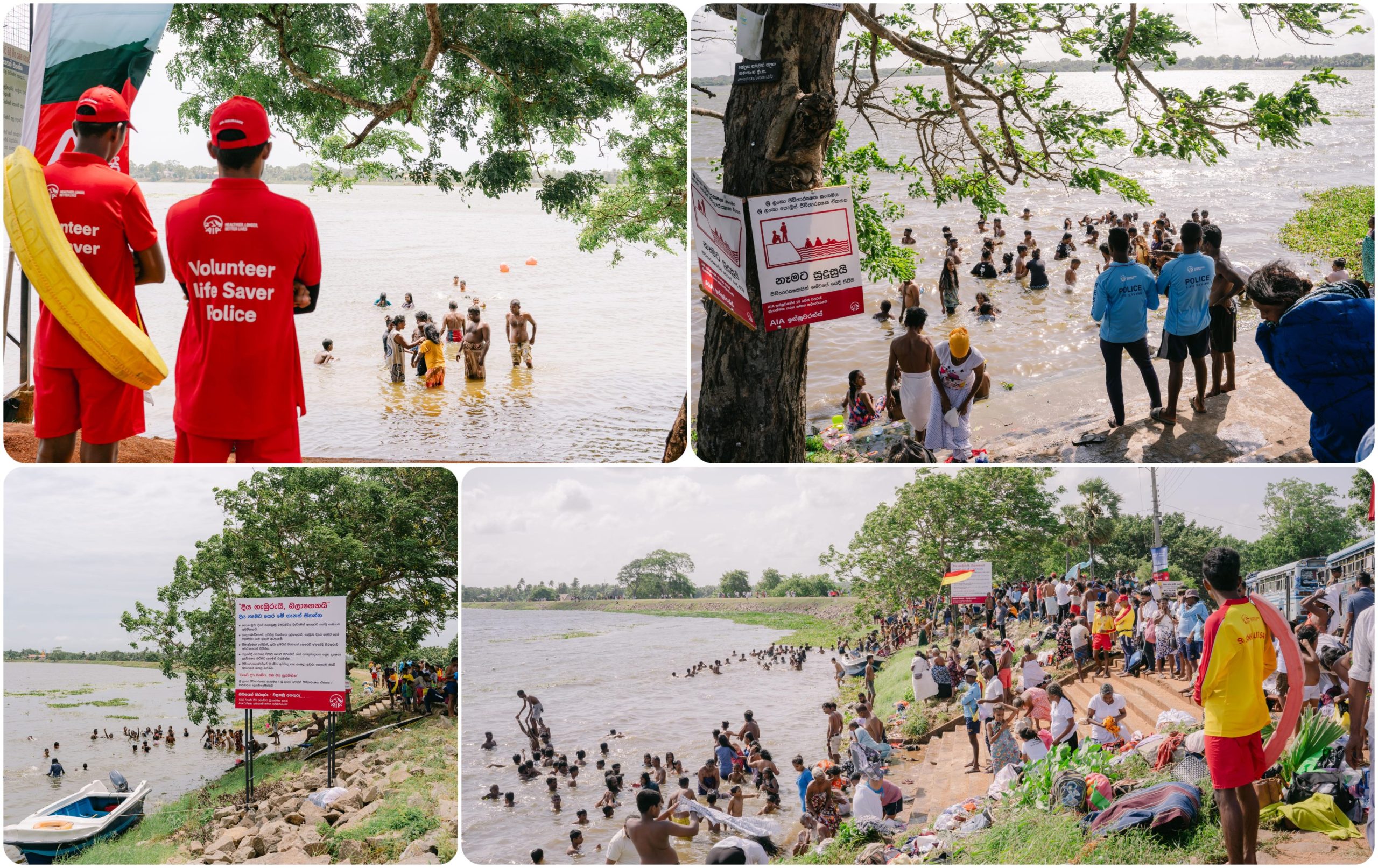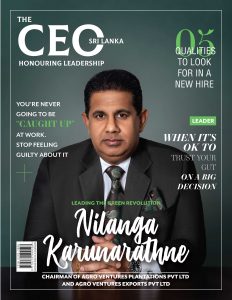In 1994, when he joined Sri Lanka Telecom, barely did he know that he would someday be the Chief Executive Officer of the leading telecommunication organisation. Kiththi Perera, the present CEO of SLT, is a person with an in-depth understanding of Technology and its continuous immersion into the lives of people. He possesses a passion for understanding the evolutionary nature of businesses and how best to support them with the solutions they need to sustain themselves as they grow. Currently, he sits at the helm of SLT’s decisive and pioneering shift into fibre, and draws from years of experience and expertise that has seen the organisation grow year-on-year.
Kiththi began his fascinating career journey at SLT, as a Telecommunications Technical Officer who was responsible for the operation and maintenance of the Colombo Satellite Earth Station and the Colombo ITMC (International Transmission and Maintenance Centre), where he worked with other global carriers and IOCs (Intelsat Operation Centre) for coordinated operational activities. Rising in the hierarchy of SLT, Kiththi was appointed as a Project Engineer in 1996, Deputy General Manager in 2002, General Manager in 2007, Deputy Chief Marketing and Sales Officer in 2009, Chief Enterprise and Wholesale Officer in 2011, Group Chief Enterprise and Wholesale Officer in 2016, and finally the CEO in 2018.
“When I joined SLT, I initially worked in International Transmission, which at the time was predominantly satellite communication. Today, people consider undersea submarine cables to be the main transmission media for telecommunications when it comes to long-distance communications, however earlier, satellite was the key and revolutionary technology. I was quite fortunate to begin my career in International Transmission, where I had the opportunity to engage with global carriers and learn numerous aspects in and around the International Transmission technology as well as matured operational processes and practices.”

Having been instrumental in the growth of several business segments from Government to Enterprise and SME, Kiththi now brings his attention to Consumer Businesses and Fibre Connectivity strongly backed by digital and large data strategies, which he believes, requires much attention at present. He is aware that the process requires internal transformation as it does the external preparations. Creating meaningful and effective new products in the digital space for customers across all business segments is a priority, and the plan to go global is a firm eventuality on his watch.
With a history of over 162 years, SLT provides diversified services and an entire range of ICT solutions that cover fixed and mobile telephony, broadband, data services, Internet Protocol Television (IPTV), cloud computing and hosting services, and networking solutions to its varied customers via the latest technologies.
Explaining the three primary lessons he learnt throughout his career journey, Kiththi highlighted three major points while stating that SLT is a university for young Engineers. “At SLT, there are many things to learn as it has every technology in its network. For instance, an Engineer would go through the technology, understand the principles of technology, and come up with innovative solutions to develop products and services in order to bring revenue to the organisation. Learning through multiple technology systems, platforms, and business segments is a key at SLT. Therefore, SLT is an organisation where any young Engineer can succeed while learning.
“I had the opportunity to travel overseas and learn new technologies and business models through SLT’s knowledge sharing sessions. The lesson I learnt from these sessions was how to effectively apply the knowledge I gained for the benefit of the society, which is the prime responsibility of any Engineer. I was able to gather knowledge through self-reading, training, and development programs, which were company-sponsored, and learnings from my Master’s Degree at the University of Moratuwa, to develop South Asia’s first Metro Ethernet Network in 2005, which was based on fibre optic rings to provide high speed, resilient and reliable connectivity to the enterprise and government customers. During the same period, I was able to design South Asia’s first repeaterless submarine cable system (Bharat Lanka Submarine Cable System) between India and Sri Lanka. The second important lesson I learnt was ‘business development’. I had the opportunity to deal with blue-chip companies and gain a wealth of knowledge through discussions with senior managements. This was a great opportunity to understand their struggles, to develop tailor-made ICT solutions for the betterment of their businesses. I learnt how to ‘manage people’ as well, as SLT is a company with a staff of over 7,500 employees with many operational layers and different skill sets and competencies.”

Furthermore, Kiththi stated that as the CEO of SLT, he spends a significant amount of time dealing with trade unions and the staff. “This helps me understand the grievances and concerns of the employees, thereby enabling me to get into the root cause of their issues, in order to come up with permanent solutions. This creates trust and confidence in my staff, which I believe is instrumental for any leader. Accordingly, we expect our staff to be empowered and facilitated by digital means to create a digital culture to better serve the customers and to deliver services in a more efficient manner to fulfill customer needs.”
Speaking about his contributions towards the planning, designing and development of the Data centre and Cloud solutions, the industry expert explained, “When I was heading the Enterprise business, I was able to lead and guide my staff to develop the country’s first purpose-built Data centre, which is Tier IV ready, in Pitipana. We also developed the county’s first fully-fledged cloud platform which is now known as ‘Akaza Multi-cloud’ with several flavours of technology to meet the diverse requirements of the customers’. This will help the government institutions and enterprises to develop citizen and enterprise applications as they can securely host these in SLT’s data centre and Akaza cloud. Moreover, SLT adopted the role of developing new applications, digital services, platforms and a digital-partner-ecosystem which is critical to drive the country’s digital transformation.”
SLT being the national ICT solutions and mobile service provider, has responsibilities towards the nation’s citizens. Stating the foremost responsibilities of SLT, Kiththi said, “We initially have to connect the entire country and its people. Our target is to connect 2 Million households through fibre by 2023, and to cover the entire population through the mobile 4G/5G network. Through its internal digital transformation programme, the digitalisation of internal processes, systems and services is now a key task of SLT.
“SLT is also keen in achieving a digitally inclusive society by introducing new products and services through better-structured R&D and innovation processes. This will be a game changer as the lifestyles of people will be changed. Moreover, transforming citizen services with the support of relevant government institutions and authorities is of utmost importance and our responsibility.”

Most entrepreneurs and senior level managers believe that staff is a cost to the organisation. However, according to Kiththi, the staff of SLT is a major strength to the organisation’s success. “Many believe that staff is a cost, however, I believe that our experienced and well-trained staff is a strength. SLT’s domestically and globally expanded fibre network is also a major strength of the organisation. Last but not least, the support extended by the government is a great strength as well.”
Revealing the future plans of SLT, the CEO stated, “SLT will become the industry leader by 2023, especially together with Mobitel, we will regain the market leadership and hence play a vital role in transforming the country. SLT will also diversify into foreign markets, mainly in evolving and establishing market places in the Far East Asia and other developed subcontinents, as the opportunities are enormous.”


